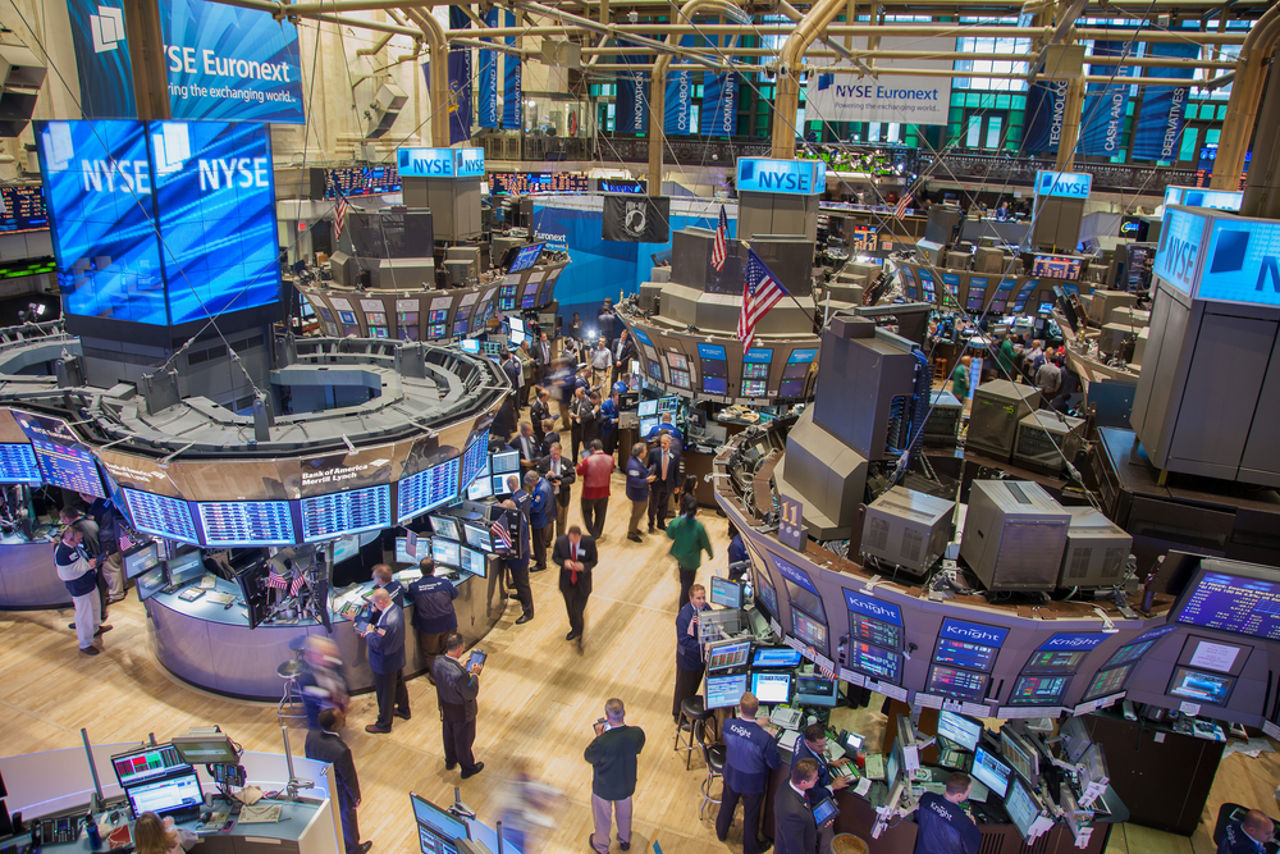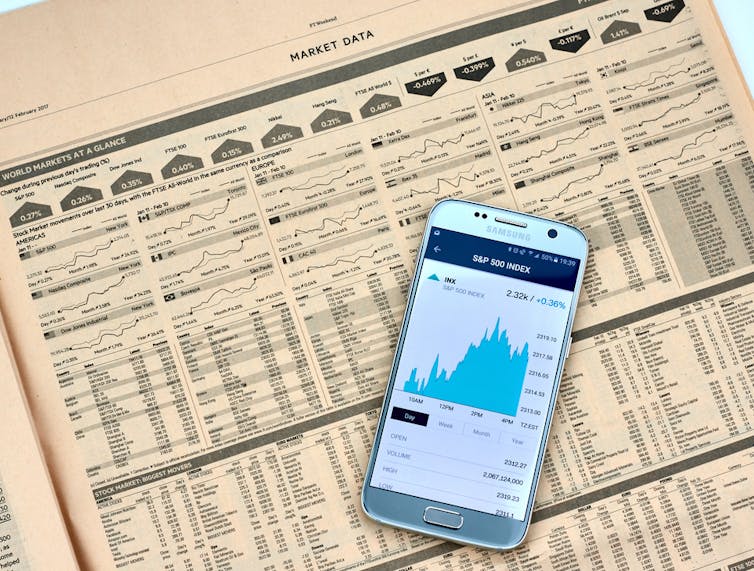The worrying wave of share buybacks on US stock markets
For several years now, to combat the global financial crisis triggered in 2007-2008, monetary authorities in the main economic zones concerned have been implementing so-called "unconventional" monetary policies.
Roland Pérez, University of Montpellier

These policies have led to cuts in key interest rates (going as far as zero interest rate policy, or even negative rates) and to an almost limitless opening up of the credit supply (quantitative easing) by central banks.
Companies, especially the larger ones, have benefited greatly from these accommodating policies. They have been able to access borrowing even more easily than before, and more readily than smaller companies via bank credit or the bond market. In addition, the drastic reduction in the cost of borrowing has had the effect of lowering the cost of capital, in line with the relative proportion of corporate debt to equity.
The temptation is then great, not only to resort massively to borrowing to finance their activities, but to go further by using part of these debt facilities to buy back their own shares, thereby reducing their shareholders' equity, corresponding to what analysts call "double leverage ".
Virtue... in theory
Indeed, since the introduction of the new monetary policies, the financial structures of major listed companies have evolved in a way that reflects these trends: a considerable surge in bond issues and bank loans, concomitant growth in share buyback programs, and the maintenance, on balance sheet assets, of a plethora of cash balances.
The divestment to which a share buyback corresponds is not in itself negative. The theoretical justification for such an operation is consistent with the free cash flow theory put forward by Michael C. Jensen as early as 1986. In short, if the managers of a listed company consider that they have excess cash after having made investments at the required rate of return (i.e. covering at least the cost of capital), it is wiser to return this surplus to shareholders rather than use it in a way that would be sub-optimal.

Dennizn/Shutterstock
The divestment to which share buy-backs correspond corresponds to this logic, which expresses, along with other decisions (choice of investments, refocusing, outsourcing, etc.), the growing financialization of companies. By draining surplus cash, share buy-backs help to "discipline" management, in the same way as debt servicing (and sometimes in combination with debt servicing when buy-backs are financed by borrowing).
While such a theoretical justification can be argued in favor of share buybacks, it can also be criticized on a number of levels: firstly, there is nothing to indicate that the sums thus returned to shareholders will then be reinvested in worthwhile investments. Shareholders who have responded positively to the buyback proposal will do what they like with the money they receive, including not investing it, spending it in other ways or hoarding it. So, while share buy-backs help to keep financial markets flowing, they in no way guarantee an optimal allocation of resources.
More of a drug than a vitamin
Secondly, this idealized vision of market functioning overlooks the bias that buyback operations introduce into the functioning of these markets, as soon as they involve significant amounts. By influencing current transactions via the demand for shares, and by influencing future transactions via the "mechanical" improvement in performance per share, share buybacks have an apparently positive effect. However, as these effects are linked to each individual transaction, the question arises as to whether they can be maintained over a longer period.
Finally, we cannot overlook the relationship between these operations, which tend to support - sometimes artificially - stock market prices, and executive remuneration, which is often largely linked to the level of these prices (bonuses and bonuses).
The interplay of risks outlined above paints a picture of the reality of financial markets that is far removed from the virtues that theory attributes to them. In practice, these markets are often sub-optimal and subject to actions carried out in the interests of particular players. In this context, the euphoric effect of share buy-backs is perhaps not to be classified as a tonic, but rather as an analeptic; in short, more a drug than a vitamin...
A worrying situation in the United States
In recent years, the number and scale of share buybacks on US stock markets have grown at an exceptional rate. In 2018, the $1,000 billion mark was reached for SP 500 companies, and the same is likely to be the case for the current year, unless an appropriate mechanism is put in place.
Concerned opinion circles in the USA have begun to worry about this drift. Financial analysts fear that the current situation, which is very favorable for equities - corresponding to an "alignment of the planets" - is only temporary. "Stock markets are setting records, but profits, tax cuts, cheap borrowing, buybacks and the Fed's patience are unlikely to last," wrote Markets Insider at the end of April. For Bloomberg, share buybacks are the only thing keeping the stock market from rolling over. Some analysts go even further, calling for a ban on such operations.
The regulators - the Securities and Exchange Commission (SEC) - are raising their eyebrows and stepping out of their usual cautious stance. SEC Commissioner Robert Jackson declared that the wave of share buybacks was benefiting executives more than shareholders. Political parties are also taking a stand. The Democratic Party was the first to express concern about the growing importance of share buybacks, calling for stricter regulation earlier this year.
At this stage, it doesn't seem possible to predict how the situation will evolve, given the uncertainties that characterize economic and monetary policies, particularly in the United States. We can simply sketch out a few scenarios based on various possible hypotheses:
- Less lax regulations - comparable to those in force in the European Union - would force the players concerned to comply. The consequences for financial markets could be negative in the short term, but stabilization with less unbalanced structures seems possible.
- A change in monetary policy - via an increase in key rates and the end of quantitative easing - would probably have comparable effects; all the more so if these global measures were combined with a minimum of regulation as mentioned above.
On the other hand, if neither of the above two policies is implemented, i.e., if there is no regulation of share buybacks and accommodative monetary policies (ZIRP and QE) remain in place, it is to be feared that the current wave of share buybacks will continue and grow to become a veritable tsunami, far surpassing the trillion-dollar mark reached in 2018 for the SP 500. We could then see the relative disconnection between the sphere of the real economy and its financial representation via the markets become even more pronounced. The conditions would then be ripe for the emergence of a new financial bubble... Future historians could then speak of the autophagy of market finance.![]()
Roland Pérez, University Professor (e.r.), Montpellier Research in Management, University of Montpellier
This article is republished from The Conversation under a Creative Commons license. Read theoriginal article.